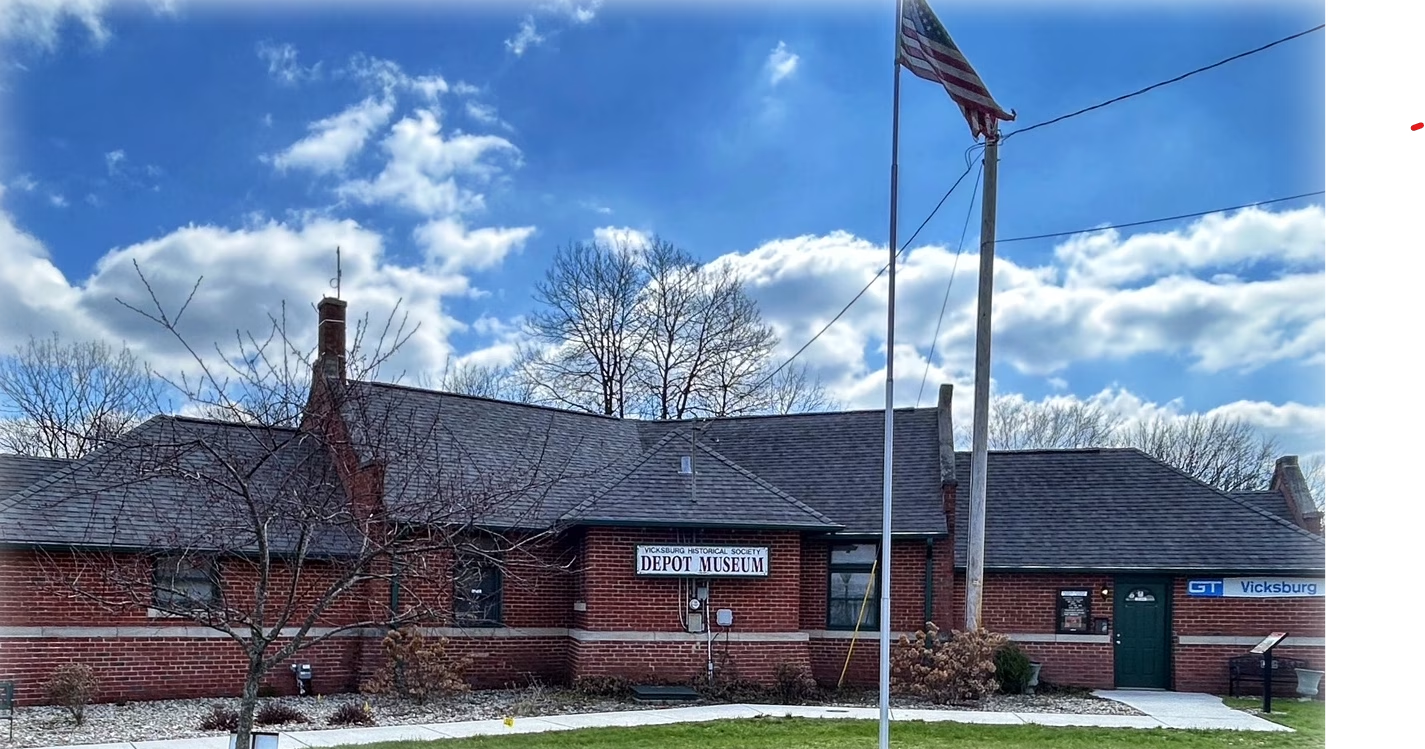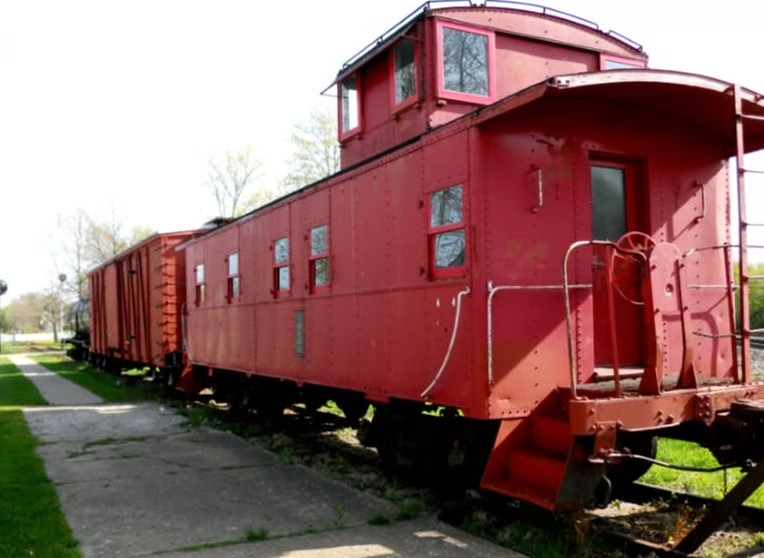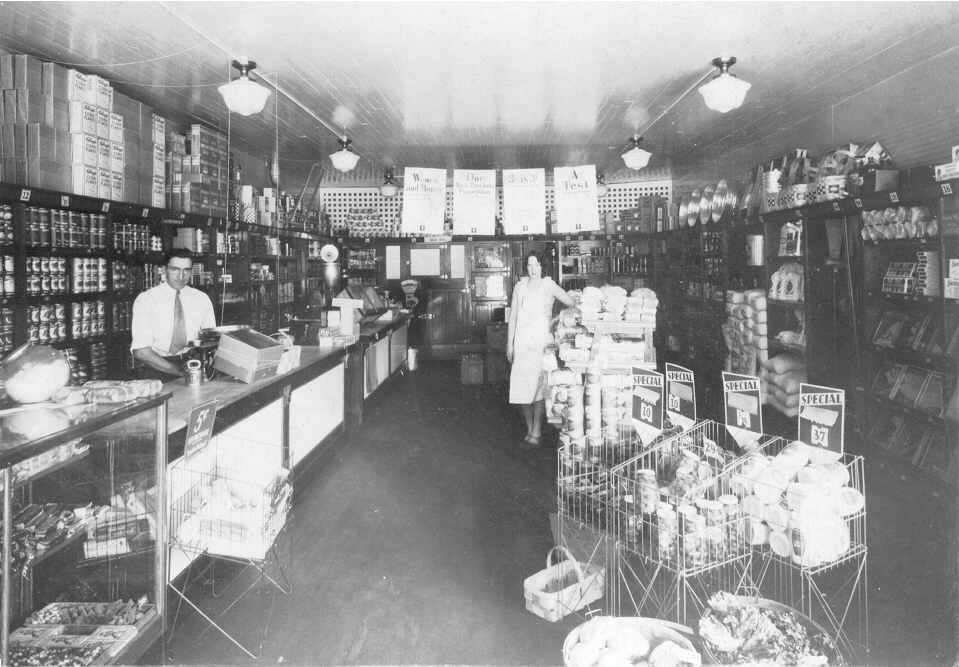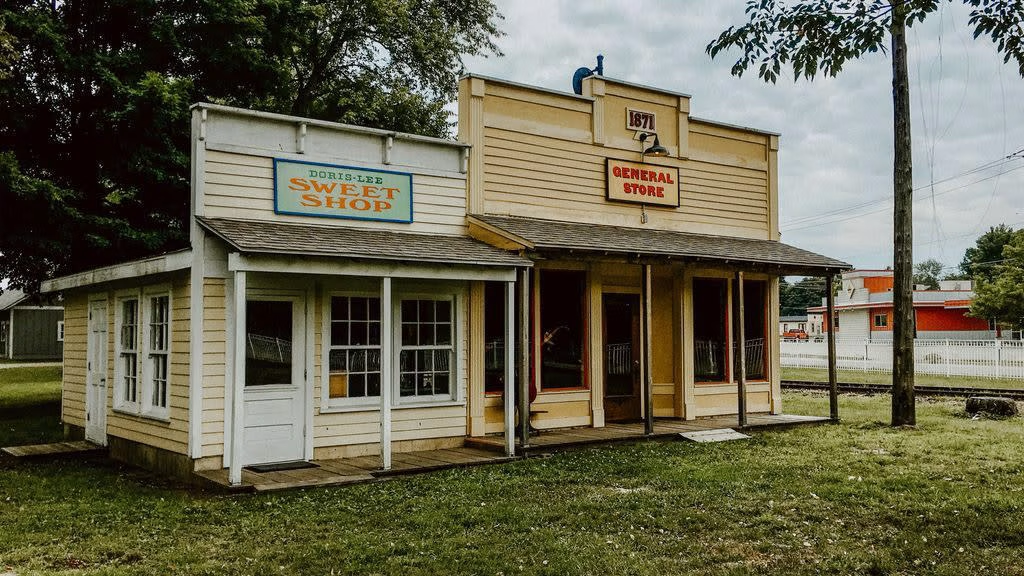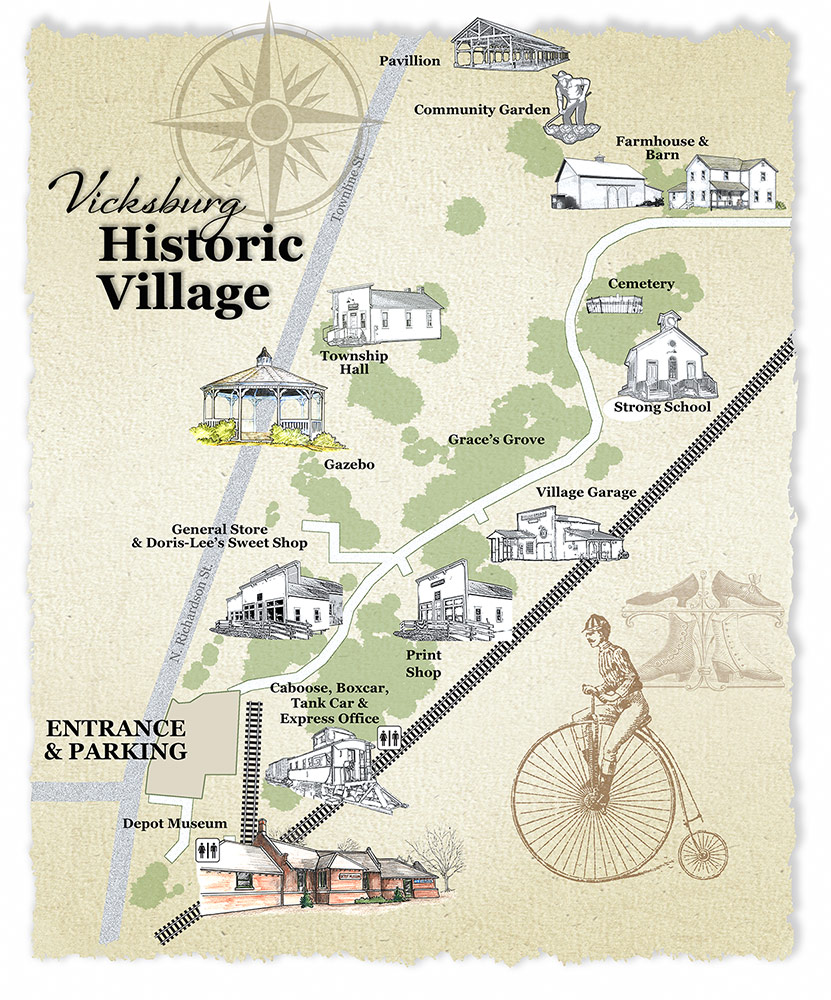Step Back in Time and Explore the Historic Village
The Vicksburg Historic Village is an open-air museum run by the Vicksburg Historical Society. Nestled near downtown, this collection of restored buildings and artifacts lets you explore everyday life from our town’s past through authentic sites like a bustling train depot, a one-room schoolhouse, and a charming general store. Join us and experience a slice of Vicksburg’s heritage.
Our Buildings
Union Depot Museum
In 1971 The Vicksburg Historical Society began work to save the abandoned depot and preserve it as a museum celebrating the area’s rich history. Today, the restored Union Depot is part of the Vicksburg Historic Village, home to over 25,000 artifacts currently held by The Vicksburg Historical Society and displayed in its various buildings.
The Farmstead
The Farmstead offers a glimpse into rural life from the late 1800s through the 1930s. The farmhouse, once a tenant home east of Vicksburg, shows how families adapted as farms grew and electricity reached the countryside. Inside, visitors can see the modest comforts of early rural living—wood stoves, ice boxes, and all. Beside it stands an 1880s post-and-beam barn, reassembled on-site by Amish craftsmen. Together, they reflect the hard work, tradition, and changing technology that shaped farm life in southwest Michigan.
Rolling Stock
The Rolling Stock features three historic railroad cars. The 1927 Santa Fe caboose, later owned by Grand Trunk Western, is restored to its 1940s appearance. The 1909 boxcar, one of the few remaining with wood ends, now serves as exhibit space. The 1920s tank car, donated by Pharmacia and Upjohn, represents a common design used through the mid-20th century. Each car offers a glimpse into the equipment used on American railroads in its era.
General Store
This building represents the many small general merchandise stores once located every five to ten miles apart in the rural areas around Vicksburg, Fulton and Scotts. These one-of-a-kind country stores flourished until the years following World War II, when better roads and more reliable automobiles, combined with the growth of suburbia, effectively shortened the perceived distance between city and country.
Doris-Lee’s Sweet Shop
Doris and Leland Weick ran Doris-Lee’s Sweet Shop at 103 E. Prairie St. from 1944–1993; they made ice cream on site and ran a busy candy counter. Ice cream was sold in local drugstores as early as the late 1800s, and before refrigeration the town relied on ice from Sunset Lake to make and keep frozen treats.
Strong School House
Originally located on Silver Street south of Vicksburg, Strong School served local children before the formation of Vicksburg Community Schools in 1947. One of 21 rural one-room schools in the area, it provided K–8 education for neighborhood children, who often walked several miles to attend. The building featured separate entrances for boys and girls, a cloakroom with a hand pump, and a classroom heated by a wood stove. Donated to the Vicksburg Historical Society in 1996 by the Copenhafer and Schroeder families, the school is preserved as an example of early rural education.
Village Garage and Blacksmith Shop
This building captures the moment when America shifted from horses to automobiles. By the 1920s and ’30s, blacksmiths who once shoed horses were repairing engines and fueling cars. Many early gas stations, like the one shown here, began as blacksmith shops adapting to a new era of travel.
Though newly built, this exhibit features authentic tools, machinery, and a 1920s gas pump—offering a vivid glimpse into the early days of oil service and the changing world of transportation.
Newspaper Office and Print Shop
This building houses much of the original printing equipment once belonging to the Vicksburg Commercial. Established in 1879, it was one of the oldest continuously published weekly newspapers in the State of Michigan before it was owned by the Kalamazoo Gazette and ceased publication in 2009. The newspaper building serves both as a letterpress museum, and as a tribute to the role the newspaper and its publishers have played in recording area history.

